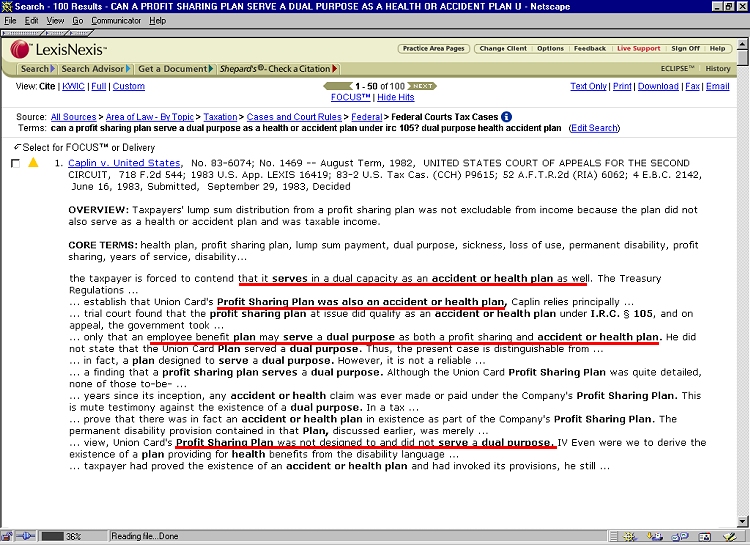Introduction
to Online Legal Research (Westlaw and Lexis)
Professor Callister
|
Session:
Fall
- Spring
|
Lexis: Natural Language Searches |
L4 |
|
| Per
the search default, you get 100 hits. The first hit, Caplin v.
U.S., is probably the most significant case on the topic. More
importantly, you note that of the top 15 hits in your results, 13 were
cited in the previous article on the subject (out of 15 cases that the
article cited). In fact, all fifteen cases from the journal article
were cited within the top 25 hits of your natural language search results.
Thus, you can be confident that you have gotten more of the relevant cases
in your search results by using natural language.
This example illustrates the strength of natural language searching--when a terms and connectors search results in too few hits (often because the legal issue is very technical), natural language can easily be used to find more relevant documents. |

|
|
UMKC
School of Law |
|